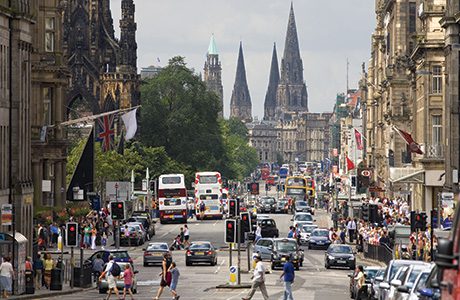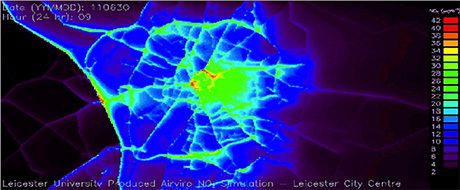
Paul Marsh reports on efforts to minimise the contribution of road traffic to air pollution
CITY dwellers in many areas of Europe are exposed to unsafe levels of a wide range of pollutants. Most of these have declined slightly over the past 10 years, but nitrogen dioxide – for which a big contributor is diesel vehicles – has not fallen as fast as was hoped, as vehicle emissions standards have not delivered the reductions that were expected.
A lively debate as to the best ways of cutting the air pollution arising from traffic emissions has been ongoing in recent times. One approach popular in parts of Europe is the use of Low Emission Zones (LEZs): geographically-defined areas where the most polluting vehicles are subject to restricted or discouraged usage.
The UK government has so far resisted calls from air quality campaigners to draft a national LEZ framework, which would encourage the use of LEZs and ensure coherency between regional areas. So far the UK has only four LEZs (in Oxford, London, Brighton and Norwich), compared to Germany, which has around 70.
Encouraging LEZs
The Scottish Government has announced plans to develop an LEZ framework, part of a Low Emission Strategy for which a consultation was launched in late January. This followed reports from Friends of the Earth that Scottish air quality had improved little in 2014, with levels of NO2 and PM10 having increased at certain monitoring sites.
Scottish local authorities have so far hesitated on LEZs, but feedback cited by the consultation document holds that a national framework for LEZs would encourage their implementation.
In England, things appear to be moving in the opposite direction, with Defra exploring measures that aim to streamline and minimise the monitoring and regulatory burden on local authorities. Councils would be required to produce only one annual improvement report in future, under plans released for consultation in late December.
Regulating traffic flow
Local councils are currently exploring a range of measures to reduce traffic-borne air pollution. Edinburgh has just announced the introduction of widespread 20mph speed limits, to come into effect later this year.
A natural accompaniment to the city’s new tram system – launched in May 2014 – the plan has beencontentious, with many doubting the air quality improvements likely to accrue from a speed limit reduction from 30mph to 20mph. While the effects on emissions of such a change are uncertain, according to the council, it is believed the new limit will encourage more walking and cycling over short distances.
For local authorities, an obvious measure to reduce air pollution is to simply keep the traffic flowing. To this end, urban traffic control systems have become popular.
For example, a traffic management system called SCOOT (Split Cycle Offset Optimisation Technique) is used in cities and towns across the UK, and other parts of the world. SCOOT works automatically, without the full-time attention of an operator, and uses data from vehicle detectors and optimises traffic signal settings to reduce vehicle delays and stops.
The next step appears to be the extension of this kind of traffic management system to incorporate a wider pool of data, including things like air quality models and data from satellites.
One such project is uTRAQ (Urban Traffic Management and Air Quality), a European Space Agency demonstration project, which is being led by TRL, a specialist in transport research and consultancy, and also one of the principal developers behind SCOOT.
The other partners in uTRAQ are traffic modelling software specialist Transport Simulation Systems and the University of Leicester. Researchers at Leicester have previously demonstrated the feasibility of a project, iTRAQ, which uses artificial intelligence techniques to better manage traffic flow in real time – and the results of this earlier project are incorporated in uTRAQ.
Initially, uTRAQ will integrate with the SCOOT traffic management system, but TRL’s Chris Kettell says it is designed with a system architecture that can support other traffic management systems in future developments. He says that, in Western Europe at least, traffic management tends to be handled using either a system like SCOOT or a number of homegrown variants.
The uTRAQ project is claimed to break new ground by bringing together air quality and weather monitoring systems, modelling/ traffic forecasting tools, and adaptive traffic management systems. All of these elements are combined in a single, user-centric, intelligent, integrated solution.
Kettell believes uTRAQ will have an easier path to adoption than other approaches might, as it is being developed by the R&D organisation behind SCOOT, something which puts them “in a unique position”.

Carbon reduction system
While NO2 is one of the major transportation related emissions being addressed by the uTRAQ system, another project is developing a system that can adaptively influence traffic in real time to reduce emissions of carbon dioxide and black carbon.
Results for the EU project CARBOTRAF were announced in London in December. CARBOTRAF is a Seventh Framework Programme (FP7) of the European Commission, and the project participants came from a number of European countries, but the monitoring and control systems that have been developed were deployed in Glasgow, Scotland, and Graz, Austria.
Involving 7 partner organisations from 4 countries with a budget of 4.4m, CARBOTRAF involved developing a model linking traffic states to emission levels.
Air Monitors provided the BC monitors, the meteorological equipment, mobile air quality and traffic monitoring equipment, and Envirologger (an associate company of Air Monitors) provided real-time data collection, cloud-storage and website display technology. Other partners include Imperial College London, the Austrian Institute of Technology, VITO (Belgium), ETS (Belgium), EBE Solutions (Austria) and IBM.
The systems are now up and running in both cities and it is clear that emissions reduction opportunities exist, according to the researchers. Initial results indicate that about 3% reduction is possible network-wide, but 10% reduction is possible in specific locations. Jim Mills from Air Monitors pointed out that particles and nitrogen dioxide remain major problems, so he hoped that CARBOTRAF will help to raise the profile of the problem and contribute to a better understanding of ways to resolve air quality problems. All speakers at the December event agreed that the best prospect for systems such as this is most likely to be in localised hotspots where air quality is most affected by traffic.
To demonstrate the system, Martin Litzenberger from AIT in Austria logged into a preview version of the CARBOTRAF system in Graz which provides traffic management staff with live data during the peak time of 6am to 9am.
So far much of the impetus for traffic centres to adopt traffic management control systems has come from priorities other than air quality, so the decision to adopt approaches like CARBOTRAF and uTRAQ may depend to some extent on the political will being present, as one of the speakers at the December CARBOTRAF event highlighted. To that end, the UK government currently appears intent on reducing the resources available for air quality management. There may be a lively debate on the cards in the months ahead.






